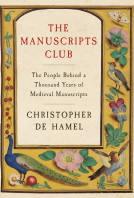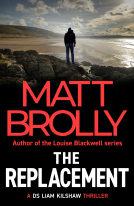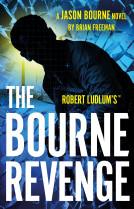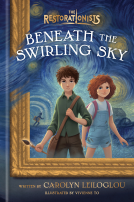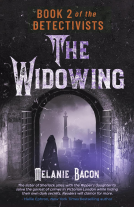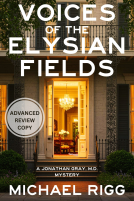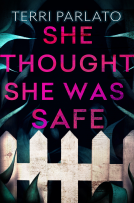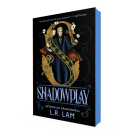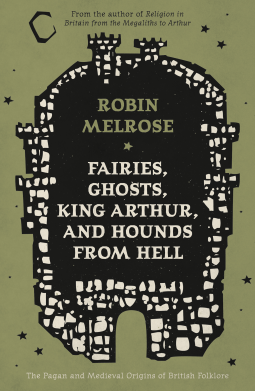
Fairies, Ghosts, King Arthur, and Hounds from Hell
The Pagan and Medieval Origins of British Folklore
by Robin Melrose
This title was previously available on NetGalley and is now archived.
Send NetGalley books directly to your Kindle or Kindle app
1
To read on a Kindle or Kindle app, please add kindle@netgalley.com as an approved email address to receive files in your Amazon account. Click here for step-by-step instructions.
2
Also find your Kindle email address within your Amazon account, and enter it here.
Pub Date Jun 30 2020 | Archive Date Aug 17 2020
Troubador Publishing Ltd. | Matador
Talking about this book? Use #FairiesGhostsKingArthurandHoundsfromHell #NetGalley. More hashtag tips!
Description
Britain has a rich folklore, and the most fascinating figures in it are undoubtedly the fairies. Many explanations have been given for British fairies, but the most popular is that they are the souls of the pre-Christian dead, living in pagan strongholds like Bronze Age barrows or Iron Age hillforts.
This book first looks at burial practices and religious beliefs of Iron Age Britons. It then surveys the people, places, language and pagan religion of Roman Britain. After the Romans left the people of Wales, western England and most of Scotland lived much as they had before, and it is here that we find Celts and Celtic place-names and with this the best preserved fairy lore. The Anglo-Saxons eventually settled in most of England and from them came the fairy lore of East Anglia.
The Vikings occupied large parts of northern England, and we probably owe the shape-shifting bogles and boggarts of the north to the paganism of these Norse settlers. Fairy lore first emerged in the Middle Ages and flourished in the 19th century, with the folklore of fairies and fairy-like creatures such as mermaids, ghosts in the landscape, hounds from Hell, and King Arthur and his knights.
A Note From the Publisher
Available Editions
| EDITION | Ebook |
| ISBN | 9781838595814 |
| PRICE | £5.99 (GBP) |
| PAGES | 200 |
Average rating from 25 members
Featured Reviews
 Mary H, Reviewer
Mary H, Reviewer
This is a book to be consulted often, also a very interesting read on folklore, and the related topics of burial sites. It can be read once, but I am going to make the most of it and refer to it often, as a comprehensive guide. Where it is not known what the origin of a word is, the author says so, which also impresses me. I never knew so much about different areas, and I consider myself pretty clued up regarding folklore. Not just Glastonbury and Avebury, but Hampshire and East Yorkshire, are included, among others. I am very impressed by the research that must have gone into this book and I would recommend it for general reading, but also as a reference book, to return to again and again, for anyone who is interested in this topic.
 Jessica K, Bookseller
Jessica K, Bookseller
This is an incredibly well-written reference book. It caters to readers who are getting into the subject for the first time without being patronising to readers who already have background knowledge. I liked the way the different sections were sorted, making it easy to scan through if you're just after information on a specific area, such as Wiltshire, but also helping to break the text into manageable chunks if you're reading it cover-to-cover.
I hadn't expected the sheer amount of detail involved in this book when I first selected it, but the amount of detail can only be a good thing. This is definitely a book I will keep referring back to, especially in my continuing Arthurian Legend research.
 Reviewer 572279
Reviewer 572279
An amazing, meticulous, expansively researched and well-organized reference book that made me long to visit the UK again in pursuit of its folkloric roots.
 Book Trade Professional 75515
Book Trade Professional 75515
A fascinating and in-depth history of Britain’s folkloric origins through the ages. Exhaustively researched and written in a formal, informative tone, the book ties British history to its many varied practices, beliefs, and superstitions.
 catherine h, Reviewer
catherine h, Reviewer
Fabulous look at the history of faeries and other magical creatures in Britain. I love these tales and it's nice to see more research being done on them. I'm a big fan of Katharine Brigg's collection of faery tales and this one is right up there with hers! I'll be sure to recommend the book and even purchase it for my own collection. Lots of research went into the writing of this book. Kudos to Robin Melrose!
As a lover of history and folklore I’ve completely fallen in love with this books. It’s full of interesting information, well written and with a good structure.
Would highly recommend.
Melrose presents a very generous go-through of different folklore elements of the United Kingdom from Roman times and forward. I found the chapters interesting, but I also found myself counting the pages and I actually struggled a bit coming through the book. I think there might just have been too much information for me to process and instead making me a bit bored.
However, as a Ethnology student I found that the material itself was very interesting, and that it tried to get to the start of each type of folkloric story and its characters.
 Reviewer 455224
Reviewer 455224
Fairies, Ghosts, King Arthur, and Hounds from Hell was an excellent in depth look at folklore of the British Isles. The writing could be a bit dry at times, as can be found in academic texts, but the level of research was amazing, and I will definitely be purchasing this to consult for my own writing.
 Jo R, Reviewer
Jo R, Reviewer
Loved this book. As others have said, it's a really well researched reference book packed with evidence relating to beliefs around fairies, mermaids, water horses and other mythical or spiritual beings. I read this cover to cover in a few days, but it really is intended as a reference book to dip in and out of when needed. I love that the individual parts of Britain are dealt with separately and the tales told are reproduced here, some as late as the last years of the nineteenth century. A fascinating read. And really relevant to any study - whether you're studying subjects like the Dissolution of the Monasteries, saints, King Arthur, beliefs or even the social history of every day people, this is a really useful book.
 Librarian 431790
Librarian 431790
A well written and well researched reference book that fascinated me. I liked how it is organised and the style of writing.
Highly recommended.
Many thanks to the publisher and Netgalley for this ARC, all opinions are mine.
 Reviewer 406780
Reviewer 406780
Well researched and highly enlightening look into the numerous myths and legends that inhabit Britain's little isle. It was fascinating to see the large variety of tales that have come from these shores, as well as the many different types of inhabitants over time who have shaped the types of stories we know and love.
I do think that at times this goes slightly too far into the academic, with a dry writing style that makes the test feel very dense at times. This isn't a book you can read in one sitting, but rather one to read in small chunks that you can go away and digest. I do think that the title is a little misleading however, given that a large portion of the book is given over to the discussion of saints and religion - which I wasn't necessarily looking for going into this and could possibly even been omitted and still have a very robust book.
Interesting, undoubtedly informative, but a little on the heavy side.
An exploration both into the folklore and mythology of Britain and an assessment of the archaeology of Britain from the Neolithic to the Anglo-Saxon Age, all in an attempt to ascertain associations between folklore and ancient pagan practice.
The author establishes these possibilities in the beginning. The author then explores the archaeological evidence of the Neolithic to the Roman periods, focusing on the presence of excarnation and exploring the possibility, perhaps plausibility, of the belief of reincarnation among at least the Iron Age British.
The author then goes through an assessment of Celtic Britain and how it survived in various ways, from the southwest sweeping around to Wales and the rest of England, particularly in terms of linguistic connections. In a similar way the author explores the story of Celtic saints, especially their connections with animals. The author then explores the legacy of Celtic folklore in southwest England, Wales, the Welsh borderlands, and the Scottish borderlands, primarily in terms of saints' tales, fairies, mermaids, Arthurian legends, and the like. The author does the same for the Anglo-Saxon legacy in the rest of England.
The author does well at drawing connections between the legendary stories and the ancient geography, showing how fairy hills were often Bronze Age burrows and the like. Understanding fairies as the recent dead was interesting in light of how fairies are presently seen in modern media. The stories are interesting and worth hearing; the connection with archaeological and historical understanding of more ancient periods helps to make some sense of the contours of the purported paranormal phenomena.
The work can be dry at times, full of detail of archaeological studies, but is especially engaging in the second half. The work could really use a conclusion to bring some coherence to all the evidence marshaled, even if the conclusions are speculative and provisional.
A fascinating look into the dark side of Britain.
Fairies, Ghosts, King Arthur, and Hounds from Hell is a clear and comprehensive reference book about folklore, a subject of perennial interest for many readers. This is definitely a reference book, not necessarily built for back to front reading. It's a valuable resource, however, and has some particularly interesting insights into the geography and history of the British Isles. I enjoyed how well researched this book is. It doesn't leave very many gaps, or unanswered questions. The writing goes into great detail, but is easy to follow. This would be a great reference for many people's bookshelves!
 Charity H, Reviewer
Charity H, Reviewer
I liked this and there is so much interesting information inside. It has great detail and does become overwhelming at times with so much. It is nice as a reference and not as an all in a sitting book. Reading a little at a time really was interesting. You can pick a story and enjoy it then read something else later. The details are helpful and I leared some things I had not known before including some added elements as well as overall new things. If you are interested in this sort of thing this is a good read, but I would have loved some illustrations or something of that sort to add to it. This seemed liked an interested subject, but it even though interesting sometimes it was rough reading.
Thanks to Matador and NetGalley for the Advance Review Copy in exchange for an honest review.
This book is extremely interesting but I am not sure it accomplishes what it set out to do.
I am not sure whether the structure of it let it down but it felt very clunky and disjointed to read and the rather dry, academic approach to writing didn't help things. I was able to get through it as I am interested in the subject matter but a book about such an interesting topic shouldn't feel like such a chore to read.
The focus is more on the archaeology side of things and the links to folklore felt very much secondary. I got the sense of it being lists of facts and information as opposed to any deeper analysis or commentary.
If I were to put my Teacher hat on I guess I'd say that I didn't feel that it "answered the question". It isn't published by an Academic publishing house but perhaps it should have been.
 Educator 388984
Educator 388984
I really enjoyed reading this book - although I would recommend taking your time and reading it with something lighter at the same time! It is quite academic, so quite heavy reading. I enjoyed the fact that it covered a lot of different eras and different folklore, as many books tend to be specialised. A very good book to read if you are after a moore or less exhaustive coverage of myths of the Britain.
I have to commend the level of scholarship that went into this book. It's staggering because I know the time something like this takes. It's definitely not a light read for someone unaccustomed to historical writing. That shouldn't factor as a reason to not read it though.
I quite enjoyed this book - I've got a lot of research around all of the subjects in this book and there were some specific elements that have given me new research points to chase down.
It's a very good book, with only a few places that I felt weren't in fitting with the overall thesis of the book itself and will be a book that I go back and reference.
I received a copy of this book from Netgalley and the publisher for an honest, unbiased review.
An interesting read that I'm glad to have discovered. I'll definitely be seeking out more by this author.
 Reviewer 618436
Reviewer 618436
"Fairies, Ghosts, King Arthur, and Hounds from Hell" by Robin Melrose blends folklore, fantasy, and history into a captivating adventure. Melrose's storytelling is whimsical, and his characters are as unique as the title suggests. If you're up for a journey through a fantastical world filled with surprises, this book is a must-read. It's a delightful and whimsical escape that left me thoroughly entertained and craving more of Melrose's storytelling magic.
Readers who liked this book also liked:
Dr. David Guyer & Ian Keldoulis
Business, Leadership, Finance, Health, Mind & Body, Science
